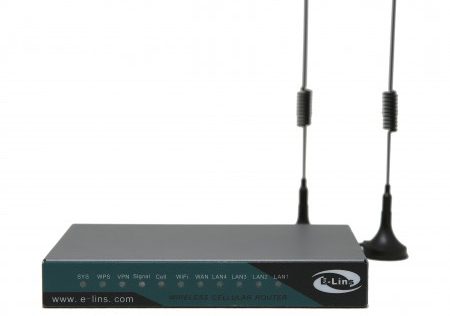Do 4G external antennas work?
Dec 05,2023 | Views: 258
Yes, 4G external antennas can be effective in improving the performance and signal strength of 4G LTE (Long-Term Evolution) networks. These antennas are designed to enhance the signal reception and transmission capabilities of devices such as 4g routers, 4g modems, or mobile hotspots that use 4G technology.
Signal Boosting: External antennas can help boost the 4G signal, especially in areas with weak or fluctuating signals. They can be particularly useful in rural or remote locations where the cellular signal may be weaker.
Directional vs. Omni-Directional: There are different types of 4G external antennas, including directional and omni-directional antennas. Directional antennas focus on a specific direction, potentially providing a stronger signal in that direction but requiring more precise alignment. Omni-directional antennas, on the other hand, receive signals from all directions, making them easier to set up but potentially providing less gain.
Cable Length: Consider the length of the antenna cable, as longer cables can result in signal loss. It's generally recommended to keep the cable as short as possible while still achieving the desired antenna placement.
Regulatory Considerations: Check local regulations regarding the use of external antennas, especially for larger installations. Some areas may have restrictions on antenna height or placement.
Before purchasing an external antenna, it's advisable to check with your service provider or the manufacturer of your 4G device to ensure compatibility and to get recommendations for specific antennas that may work well in your location. Additionally, reading reviews or seeking advice from other users who have similar setups can provide valuable insights into the effectiveness of specific antennas in real-world scenarios.
Prev: How do I connect an external antenna to my 4G router?
Next: Differences between home routers and 4G/5G industrial routers
Here are some key points to consider:
Signal Boosting: External antennas can help boost the 4G signal, especially in areas with weak or fluctuating signals. They can be particularly useful in rural or remote locations where the cellular signal may be weaker.
Directional vs. Omni-Directional: There are different types of 4G external antennas, including directional and omni-directional antennas. Directional antennas focus on a specific direction, potentially providing a stronger signal in that direction but requiring more precise alignment. Omni-directional antennas, on the other hand, receive signals from all directions, making them easier to set up but potentially providing less gain.
Compatibility: Ensure that the external antenna is compatible with your specific 4G device or 4g router. Different devices may have different antenna connectors and requirements.
Cable Length: Consider the length of the antenna cable, as longer cables can result in signal loss. It's generally recommended to keep the cable as short as possible while still achieving the desired antenna placement.
Regulatory Considerations: Check local regulations regarding the use of external antennas, especially for larger installations. Some areas may have restrictions on antenna height or placement.
Before purchasing an external antenna, it's advisable to check with your service provider or the manufacturer of your 4G device to ensure compatibility and to get recommendations for specific antennas that may work well in your location. Additionally, reading reviews or seeking advice from other users who have similar setups can provide valuable insights into the effectiveness of specific antennas in real-world scenarios.

 Networking
Networking EMBEDDED SYSTEMS
EMBEDDED SYSTEMS Switches
Switches Wireless Solutions
Wireless Solutions Industrial Computer
Industrial Computer Cloud Services
Cloud Services




